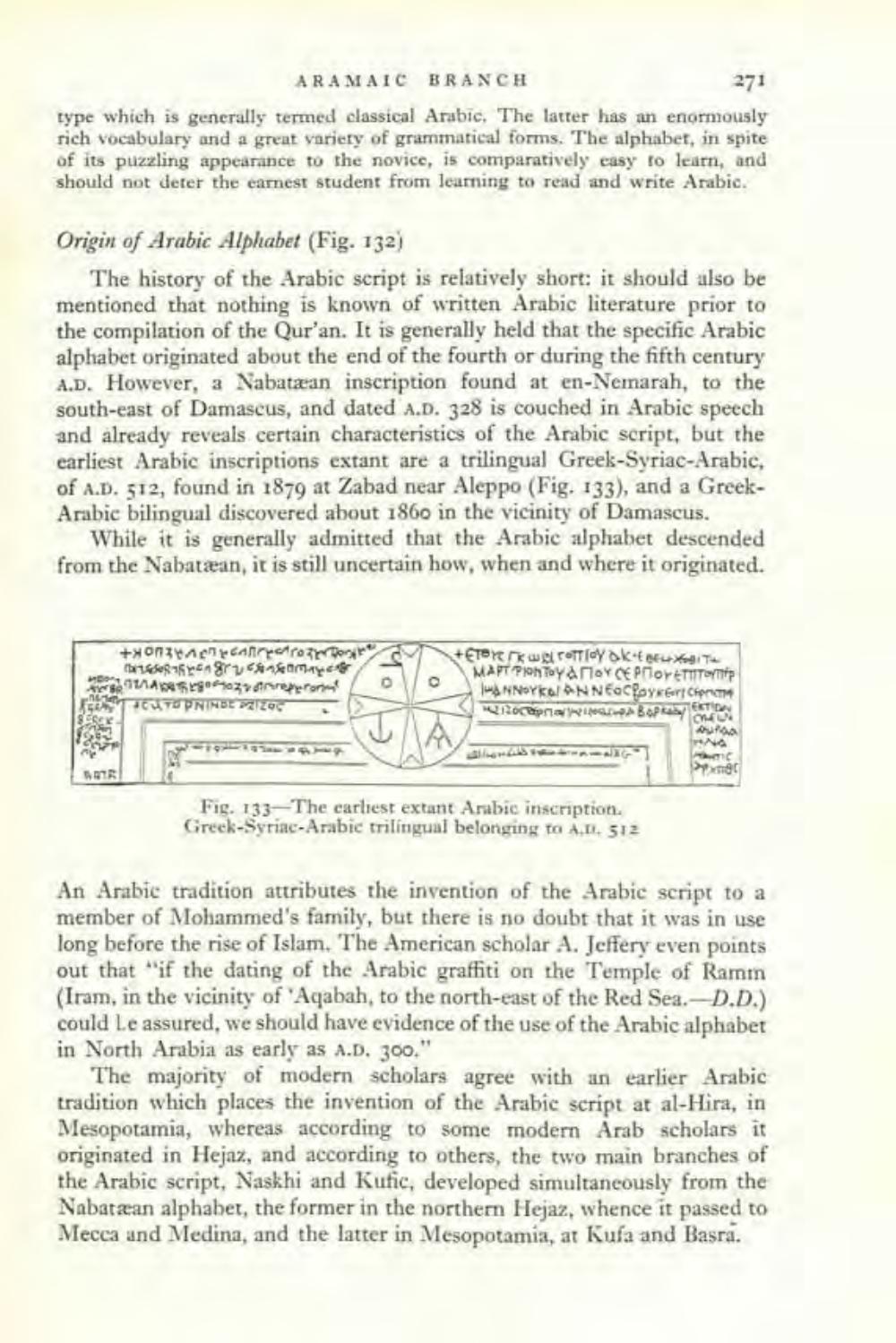________________
ARAMAIC BRANCH
271 type which is generally termed classical Arabic. The latter has an enormously rich vocabulary and a great variety of grammatical forms. The alphabet, in spite of its puzzling appearance to the novice, is comparatively easy to learn, and should not deter the earnest student from learning to read and write Arabic.
Origin of Arabic Alphabet (Fig. 132)
The history of the Arabic script is relatively short: it should also be mentioned that nothing is known of written Arabic literature prior to the compilation of the Qur'an. It is generally held that the specific Arabic alphabet originated about the end of the fourth or during the fifth century A.D. However, a Nabataan inscription found at en-Nemarah, to the south-east of Damascus, and dated A.D. 328 is couched in Arabic speech and already reveals certain characteristics of the Arabic script, but the earliest Arabic inscriptions extant are a trilingual Greek-Syriac-Arabic, of A.D. 512, found in 1879 at Zabad near Aleppo (Fig. 133), and a GreekArabic bilingual discovered about 1860 in the vicinity of Damascus.
While it is generally admitted that the Arabic alphabet descended from the Nabatean, it is still uncertain how, when and where it originated.
Don
WATE
+жолзулелесилися годетел
Repro CATO PRINDE PRIZO
0
O
HETO Yerk wel rottidy akt BEXABIT MAPT PONTOY &ПOYCE ProvεTop ANNOYKANNEOCBoyer Cipri 212осарлассной верхня ста
TEKTIDAN
Fig. 133 The earliest extant Arabic inscription. Greek-Syriac-Arabic trilingual belonging to A.. 512
Auto HNS MAITIC
Sec
An Arabic tradition attributes the invention of the Arabic script to a member of Mohammed's family, but there is no doubt that it was in use long before the rise of Islam. The American scholar A. Jeffery even points out that "if the dating of the Arabic graffiti on the Temple of Ramm (Iram, in the vicinity of 'Aqabah, to the north-east of the Red Sea.-D.D.) could Le assured, we should have evidence of the use of the Arabic alphabet in North Arabia as early as A.D. 300."
The majority of modern scholars agree with an earlier Arabic tradition which places the invention of the Arabic script at al-Hira, in Mesopotamia, whereas according to some modern Arab scholars it originated in Hejaz, and according to others, the two main branches of the Arabic script, Naskhi and Kufic, developed simultaneously from the Nabatean alphabet, the former in the northern Hejaz, whence it passed to Mecca and Medina, and the latter in Mesopotamia, at Kufa and Basra.




